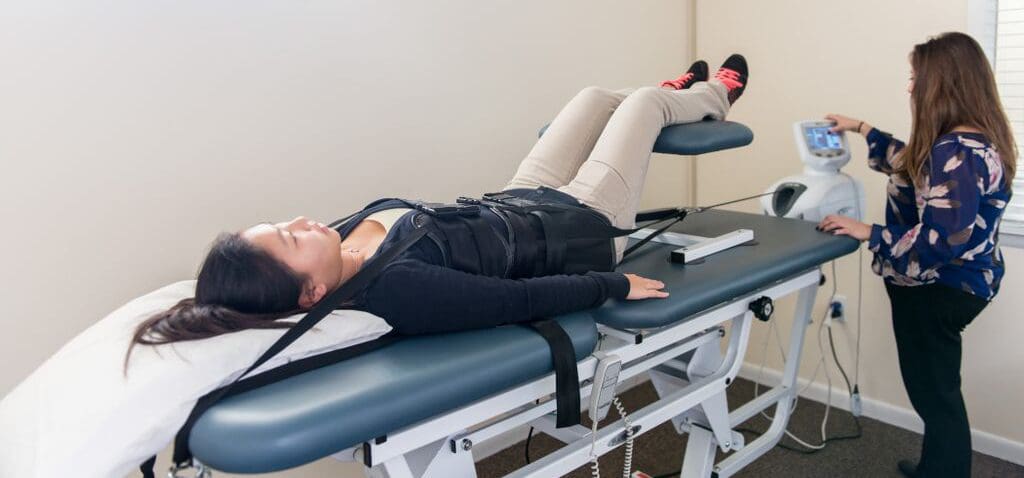Traction Therapy
Introduction to Traction Therapy
Traction therapy is a therapeutic technique that involves the application of a longitudinal force to the spinal column, effectively pulling parts of the spine in opposite directions. This method is used to stabilize or reposition damaged areas of the spine, alleviate pressure on vertebral discs, and reduce pain. The force is typically applied through weights or fixation devices attached to the skull, requiring the patient to be in bed or fitted with a halo vest
Mechanism of Action
Traction therapy works by manually or mechanically stretching the spine, which helps to:
- Reduce Pressure on Discs: By stretching the spine, traction decreases the pressure on the vertebral discs that may be causing pain.
- Enhance Disc Hydration: The decompression helps the discs to rehydrate and regain their natural shape and function.
- Alleviate Nerve Compression: Reducing disc pressure helps to relieve the compression on nearby nerves, thereby reducing pain and improving function.
Types of Traction Therapy
Traction therapy can be administered either manually or mechanically, depending on the patient’s condition and specific needs.
Manual Traction
In manual traction, a physical therapist uses their hands to apply force to the joints and muscles, creating a state of traction. This type of traction is typically short-term and can be effective for certain conditions. It is a safe treatment option when performed by a skilled therapist.Mechanical Traction
Mechanical traction uses specialized devices to stretch the spinal vertebrae and muscles. This method allows for continuous or intermittent stretching and can incorporate heat, vibration, and massage to enhance the therapeutic effect. Mechanical traction is controlled by computer-based systems to apply precise amounts of pressure. It is not suitable for patients with severe bone conditions, heart disease, spinal fractures, or arthritis.Cervical and Lumbar Traction
Traction therapy can target different areas of the spine, primarily the cervical (neck) and lumbar (lower back) regions.Cervical Traction
Cervical traction involves stretching or pulling the head away from the neck to relieve pressure on the cervical discs. This can be done manually, mechanically, or using motorized methods with a head or chin sling. Supine cervical traction, performed in a lying position, reduces the weight of the head and is often more comfortable for patients.Lumbar Traction
Lumbar traction requires greater force to distract the vertebral segments in the lower back. Common methods include using thoracic or pelvic belts, inversion tables, split traction tables, or auto traction tables. Split traction tables have a mobile and a stationary half, while auto traction tables allow patients to control the traction themselves by pulling on an overhead bar and using their feet to activate alternating compressive and distracting forces.How Traction Therapy Works
Spinal discs are circular structures located between each vertebra, consisting of a tough outer layer and a soft inner tissue. When a disc is damaged, the inner tissue can protrude through the outer layer, compressing nearby nerves and causing pain. Traction therapy pulls the vertebrae apart, reducing pressure on the discs and allowing the soft inner tissue to retract back into place. This decompression of the nerve reduces pain and helps rehydrate the disc, promoting healing.
Conditions Treated with Traction Therapy
Traction therapy is used to treat various spinal conditions, including:
- Slipped Discs
- Bone Spurs
- Degenerative Disc Disease
- Herniated Discs
- Facet Disease
- Sciatica
- Foramina Stenosis
- Pinched Nerves
- Cervical Spondylosis
- Lumbar Spondylosis

